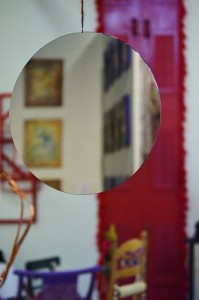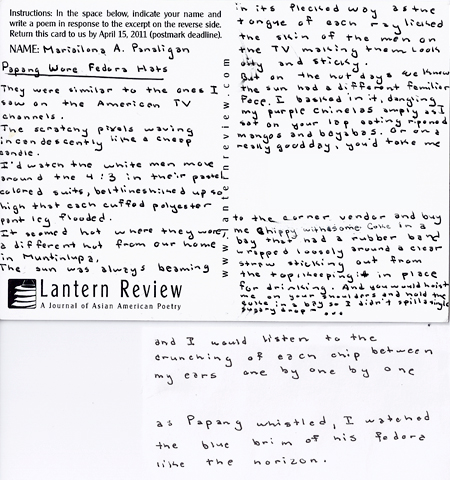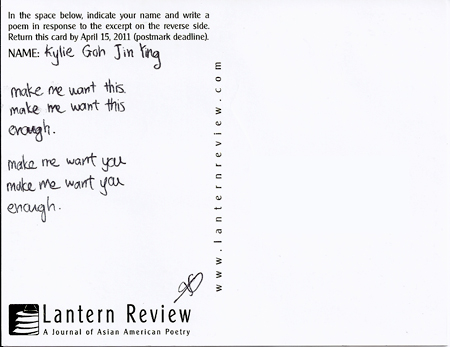
Today’s exercise is less of a prompt and more of a practice, but having just returned from the 2011 Kundiman retreat—at which Oliver de la Paz announced on the first day that he fully intended to “steal” from each of us, and where Kimiko Hahn shared a lovely collaborative variation of a “stealing” exercise during my final workshop of the weekend—I wanted to continue the chain and extend the same thought to you.
Perhaps the term “stealing” is a bit harsh-sounding—”recycling,” “quoting,” or “riffing” might be more a more genteel way to put it, since what it involves is not outright plagiarism, so much as a process of exploring new avenues through “sampling” and strategic mimicry—but somehow it still feels apropos, as the delightful discovery and surprise that occurs when one takes something that one admires and puts it into a different context, tinkers with it, uses it as a launching pad or a frame, embeds it, or layers it with one’s own work, does in part come from the feeling that one is doing something utterly subversive. Socially and culturally, we tend to envision the artist as a lonely figure who operates entirely self-sufficiently—the work, and its every element, must come out of her head and her head alone. But in fact, in our daily lives as artists, we are engaged in a perpetual process of “stealing”: we observe things in the world around us—the quality of light on a bedspread, the deep crease in a parent’s forehead, the conversation between a pair of girls at a nearby table, the color of a house, what the host is saying on TV, the sound a cash register makes when it opens, the texture of a wall at the train station, the funny taste of food when one is sick, a joke that fell flat at a party—we process them, we file them away, and these things which we file away filter themselves, eventually, into our creative work.











